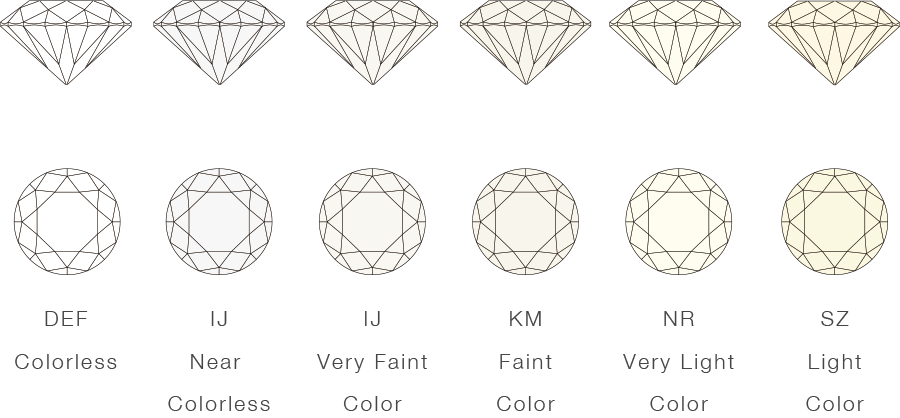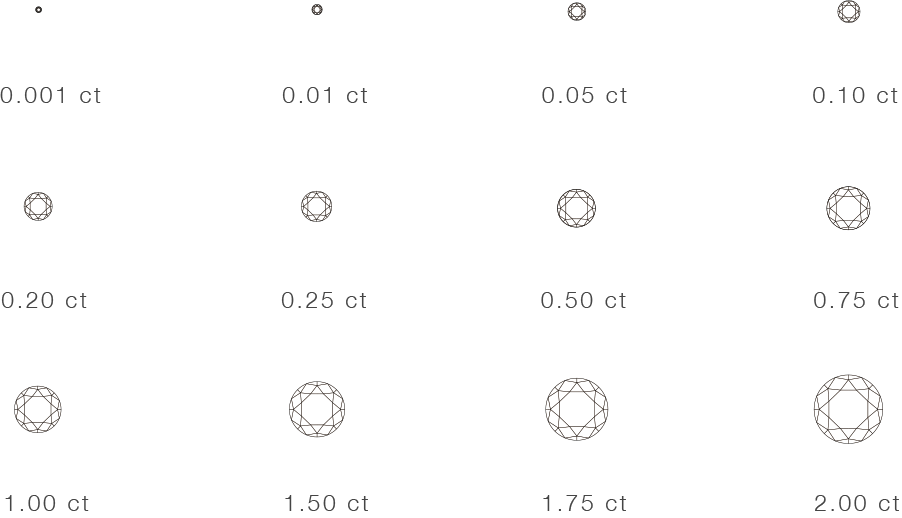
The most important factors in choosing a diamond in the world of the jewelry industry include the 4Cs of a diamond (cut, clarity, color, and carat), authenticity, craftsmanship, and exceptional service.
The 4Cs And The Right Company
How is a diamond graded? While the 4Cs are the characteristics of diamonds used to determine how a diamond is graded, a diamond must first be found. To find authentic, natural, and expertly cut diamonds and navigate the selection and delivery process, one must select the right company.
4C OF A DIAMOND
CUT
Cut is the most important category of the 4Cs, as the cut fundamentally determines a diamond’s brilliance. It’s easy to think that the cut refers to a diamond’s shape, but that’s not the case. The cut actually refers to a diamond’s proportions, symmetry, and polish. This means if a diamond has perfect clarity and color, it can appear dark with a poor cut.
Our highly skilled craftsmen cut diamonds to perfect proportions. This allows the maximum amount of light to be returned from the top of the diamond.
4C OF A DIAMOND
CLARITY
Clarity assesses internal defects or inclusions and surface blemishes of a diamond. As diamonds are created under high heat and pressure deep within the earth, this process organically leads to diamonds containing natural inclusions.
Diamonds with fewer and a smaller number of these characteristics receive higher clarity grades ranging from FL, or Flawless, to I, which have many inclusions that are visible to the naked eye.


4C OF A DIAMOND
COLOR
Color is the second most important characteristic of a diamond after the diamond cut. White or colorless diamonds exist on a scale of many different shades, ranging from the highest quality colorless white (D) to light yellow (Z).
4C OF A DIAMOND
CARAT
The Carat of a diamond refers to the weight of a diamond, not necessarily its size. The carat and the cut of a diamond go hand in hand as the two categories affect each other.
For example, a diamond with a high carat and a poor cut can result in a deep-cut diamond that appears smaller in size from the top, as all of the weight is at the lower half of the diamond. Meanwhile, a diamond with a smaller carat and an excellent cut can appear larger to the eye.
Synthetic Diamond Detection
Grunberger testosterone cypionate price Diamonds uses state-of-the-art synthetic diamond detection machines, such as the GLIS-3000 and the M+ Screen, to eliminate the risk of getting synthetic diamonds.
Craftsmanship
While there is much talk around diamond specifications and grades of diamonds, it’s critical to remember an expert cut provides fire and brilliance, and a poor cut can make a diamond appear dark and lifeless.
With four generations of experience, Grunberger Diamonds uses superior craftsmanship to provide the ultimate quality and precision using the Grunberger Precision Cut and the Hearts and Arrows technique. Experts consistently cut all melee size diamonds (every size ranging from 0.70mm ~ 3.70mm) with perfect proportions and symmetry.
An Exceptional Diamond Service Company
Grunberger Diamonds is proud to provide personalized expert service to retailers, manufacturers, wholesalers, designers, and jewelers across the globe.
When an order is received, experts select the suited parcel and sort it based on the customer’s specific order. Since Grunberger ideal cut diamonds are calibrated to 0.025mm, the diamonds are then separated into even more particular sizes.
After selecting the required size, we check every diamond using a loupe and a Hearts and Arrows scope.
The diamonds are then directly shipped and safely delivered to the customer according to the preferred delivery date.
Experience The Grunberger Difference
When it comes to knowing the most important characteristics of diamonds, Grunberger Diamonds has a legacy of expertise and passion you can count on.
You can get started right now by requesting a quote or opening an account.

